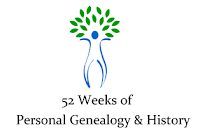The road one travels in setting up a new laptop always has a few bumps in it. Last summer I had to travel this road again when my old laptop began having major issues. The biggest pothole I encountered was in getting my Outlook 2007 files transferred.
The features I use in Outlook are: calendar, task list, and contacts. I do not use Outlook for email. As it turns out, Microsoft creates several data files for Outlook and stores them in a couple of different places. It took quite a bit of research and some trial and error to get all the important Outlook configurations and data transferred over and set up. In the end it was pretty easy but the road to that point was a rocky one.
If you ever need to do this, here are some steps you can try. It worked for me. I’m not saying it’s the best or only way, it just worked. These instructions worked for Windows 7. You might have to do things a little differently if you are using a previous version of Windows. Microsoft has several help articles you might find helpful. One in particular was indispensible in solving my issues.
First you will need to be able to see “hidden” folders:
1. In Windows, click the Start button, and then click Control Panel.
2. Click Appearance and Personalization.
· NOTE: If you are using Control Panel Classic View, double-click Folder Options, and then continue with step 4.
3. Click Folder Options.
4. On the View tab, under Advanced settings, under Files and Folders, under Hidden files and folders, select Show hidden files and folders.
Next you need to find the different types of files:
Note: drive and user will vary from computer to computer and situation to situation.
Personal Folders File (.pst): Contains emails, calendars, contacts, tasks, and notes. Location: drive:\Users\user\AppData\Local\Microsoft\Outlook
Command Bar and Menu Customizations (.dat):
Location: drive:\Users\user\AppData\Roaming\Microsoft\Outlook\outcmd.dat
Navigation Pane Settings (.xml): Includes shortcuts, Calendar and Contact links.
Location: drive:\Users\user\AppData\Roaming\Outlook\profile name.xml
Outlook Contacts AutoComplete (.nk2): AutoComplete is a feature which displays suggestions for names and e-mail addresses as you begin to type them. These
suggestions are possible matches from a list of names and e-mail addresses that you have typed before, known as the AutoComplete name list. (It’s not something I seem to have at this time, but then you never know about later on…)
Location: drive:\Users\user\AppData\Roaming\Microsoft\Outlook
Print Styles (Outlprnt with no extension):
Location: drive:\Users\user\AppData\Roaming\Microsoft\Outlook
Signatures (.rtf, .txt, .htm): I don’t seem to have any of these files at this time but again, you never know what might happen down the road.
Location: drive:\Users\user\AppData\Roaming\Microsoft\Signatures
Stationery (.htm):
Location: drive:\Program Files\Common Files\Microsoft Shared\Stationery
Custom Forms:
Location: drive:\Users\user\AppData\Local\Microsoft\Forms
I don’t seem to have this.
Dictionary (.dic)
Location: drive:\Users\user\AppData\Roaming\Microsoft\UProof
Templates (.oft)
Location: drive:\Users\user\AppData\Roaming\Microsoft\Templates
I’m not sure how you would use templates in Outlook but I notice that the Word templates that I have created are in this file.
There we have it. A nice list of where to look for some of the Outlook files. Hopefully this will make the road much smoother the next time we find ourselves needing to transfer the various files related to Outlook. At least now I know where to look online for help and the keywords to use (outlook 2007 files configurations save). I hope this helps you too!
© 2011, copyright Michelle Goodrum



























